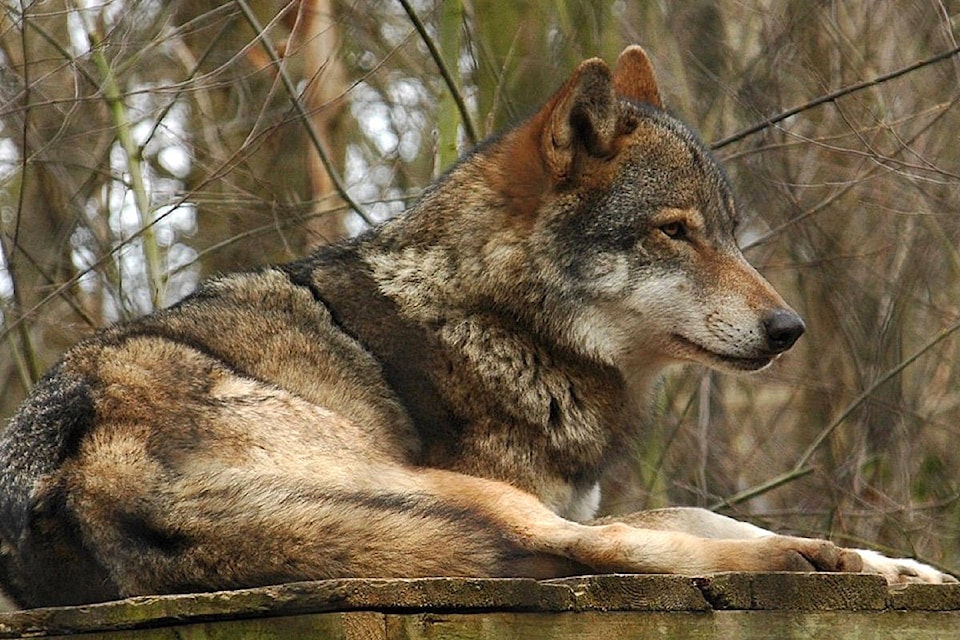Two Hope hikers were left awestruck after an encounter with what they are sure was a grey wolf.
Partners Sara and Skyler were on a hike near Alexandra Bridge January 3. When they were down on the train tracks to take a few photos, they spotted what Sara at first thought was a coyote.
“About 25 metres away was what my brain told me was the biggest coyote I have ever seen in my life, in the middle of the train track, just staring at us,” she said, describing the animal as grey and brownish in colour, a long face and smaller ears. “My first thought was how do coyotes get that big.”
Before the panic set in, there was a moment of awe for both of them.
“There was a magical moment, it’s almost ethereal to be surrounded by silence in the middle of the woods and on train tracks and look behind you and see this creature that we’re taught to fear and also in awe of. It’s divine to witness that in nature,” Skylersaid.
Sara then acted on what she had previously been told about wild animals, she made herself large and let out a low holler. When the animal didn’t retreat but instead started following them, Sara knew it was time to run.
They ran to where their car park, the animal following behind them and getting within 100 metres at one point. After the encounter, they called the Conservation Officer Service, who told the two it was highly unlikely that they had seen a wolf.
Wolf sightings are extremely rare in the Hope area said Bob Butcher, Sgt. for a zone that ranges from Chilliwack to Lillooet. He said two reports of wolf sightings have been received for the area this past year; one of a wounded wolf near Hells Gate and another of a pack of wolves in west Harrison.
Wolves exist across B.C. and are increasing in number, he said, for a variety of reasons that could include changing wolf management practices and the lower prices for fur.
They won’t be found in urban environments, he added, as they don’t adjust as well as coyotes do to these places.
Both Sara and Skyler are sure they saw a wolf that day.
Both have had nightmares involving coming face-to-face with a wolf since the encounter but are not deterred from going hiking in the wilderness. Proper preparation, respect and bear mace in the worst case is how they will prepare next time.
“We do want to honour the trails that we hike and the spaces that we inhabit and be aware of what we’re connecting with, whether its an animal or someone’s home or sacred land,” Skylersaid.
Butcher said it is extremely rare for a wolf to be dangerous to humans. Wolves may express interest if hikers are out with small dogs they see as prey, or if the wolf has a den nearby they may keep an eye on people until they leave.
Butcher recommended people living in rural areas should ensure their domestic animals and livestock are fenced in and ensure food sources are not left out. Keep dogs, especially smaller ones, and children close during walks in the wilderness as well.
“If they’re not purposely fed and become conditioned to human food sources, they’re not a danger to people. Attacks on people with wolves are extremely rare,” he said.
